The final kill of the ace of aces, Erich Hartmann, the most successful fighter pilot of all time
Dangerous encounter in the air
In March 1945 a Russian bombing attack on Prague was reported. Hartmann took off with four Me 109s. A Russian formation of 30 or so Soviet Douglas A-20 Boston bombers and Petlyakov Pe-2s came into view, and above them some 25 Russian Yak-9s and P-39 Airacobras. Hartmann was flying with his Schwarm at an altitude of 23,000 feet—above the Russian formation, and with the sun behind him. An ideal situation for a surprise attack, but instinct warned him otherwise. Suddenly he spotted something: vapour trails, coming closer. A short while later silver dots became visible – American Mustangs.
They were flying 3,000 or so feet lower, suspiciously circling the Russian formation further below. Neither the Russians nor the Americans paid any attention to the four black dots in the sun. Now! Hartmann led the attack. The first Mustang was hit and crashed in flames, followed directly by a second, which was at the very least seriously damaged. The Americans had not even seen Hartmann. One of his comrades also hit a Mustang. Hartmann dived through the Russian formation, damaging one of the Soviet bombers that had been delivered to the Russians by the Americans, a Douglas A-20 Boston. Then the Me 109s tore away at low level. Hartmann turned around: all the Me 109s were there.
Eh? What on earth was that? The Americans had begun attacking the Russians. Three Yak-9s were sent crashing, one Mustang was hit, leaving a trail of glycol in its wake. Hartmann laughed himself silly. He could not help savouring a certain smug Schadenfreude. Those “Allies“, whose aircraft bore the red and white star on their fuselages, did not appear to trust each other all that much.
8th May 1945: last hours of air combat
By 8th May 1945 Hartmann had finally stopped laughing. The end of the war was imminent, it was now only a matter of hours away—it was all over. The Russian Yak-9 pilot with his euphoric display over Brünn had flown directly into Erich Hartmann’s gunsight. With him that took his tally to 352 kills—one more, one less—what difference did it make now? It was a silent victory. When Hartmann had turned with his wingman, none of the other Russian pilots saw him. Everything happened so quickly. Nor did the pilots of the American Mustangs, whom Hartmann himself spotted in time just as they were arriving over Brünn, notice the two dark-green mottled Me 109s either.
They were simply amazed that their Russian brothers-in-arms in their Yak-9s should suddenly and unexpectedly turn in to attack them…
8th May 1945


To the best of the author’s knowledge, there is only one photo which clarifies the identity of the last Me 109 flown by Erich Hartmann – at least the Messerschmitt he flew at the time of his 350th air victory, on 17th April 1945 (and thus probably also on 8th May 1945). The adjacent photo shows him on 17th April 1945 beside his machine. Although the picture only shows a section, it is informative. For:
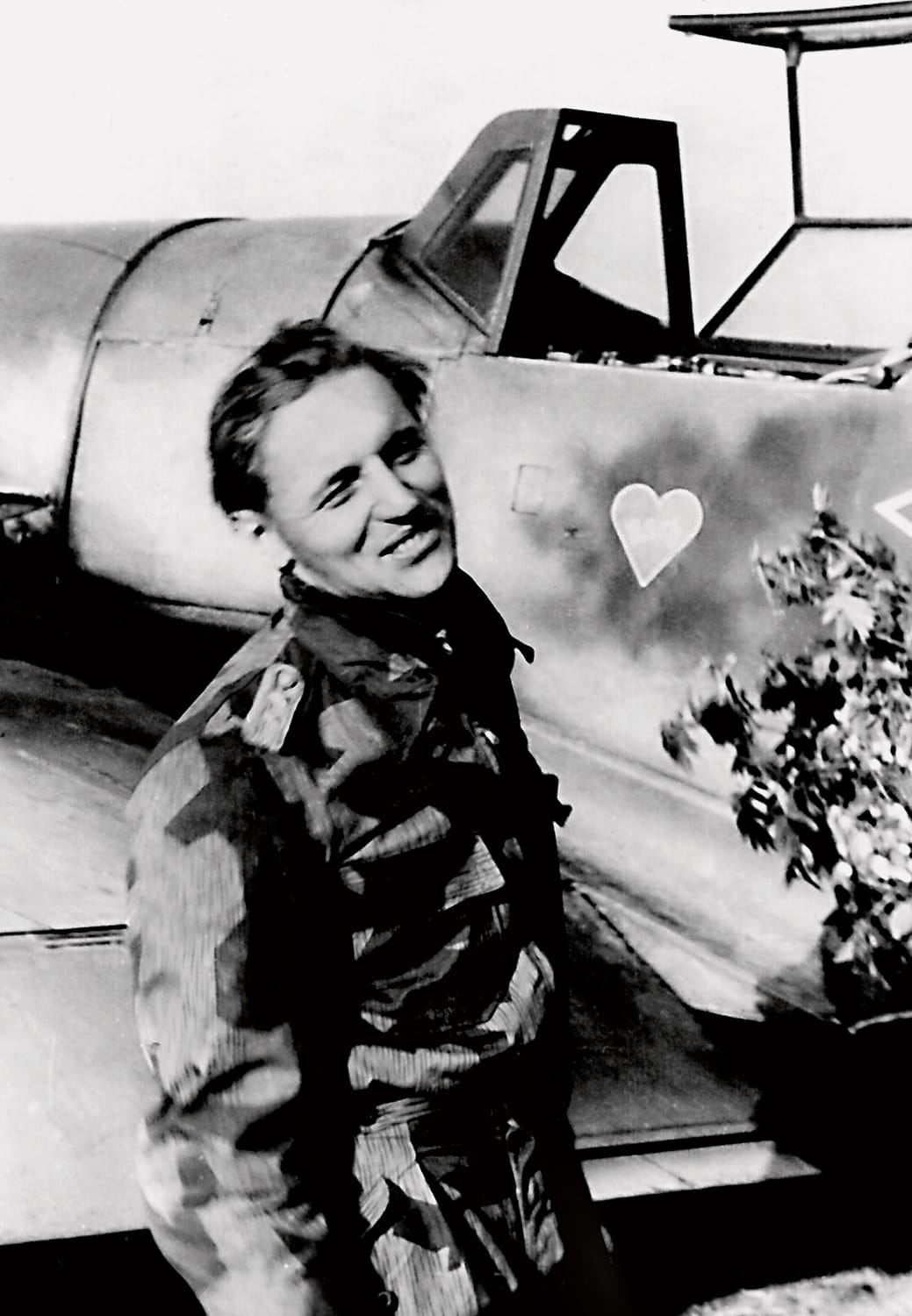
- evidently it is an Me 109 with a modified aerodynamically efficient engine cowling, that is without the “bulges“ of the G-6 and early G-14 variants. The Me 109 G-10, G-14 or K-4 variants flown at the end of the war and which had no bulges, however, all had a semi-circular transition between the engine cowling and the side of the fuselage, just outside the cockpit: with one exception. The designers from the Erla company in Leipzig completely modified the port side of the aircraft, resulting in a slight asymmetry between the two halves of the fuselage. On the port side, the engine cowling was recessed almost seamlessly into the side of the fuselage, as can be seen in the photo of Erich Hartmann. This identifies the Messerschmitt Bf 109 variant and the manufacturer: it is an Me 109 G-10 manufactured by Erla of Leipzig.
- Erla of Leipzig never produced the Messerschmitt Bf 109 K-4. At the end of January 1945, I./JG 52 received a few Messerschmitt Bf 109 G-10s (mainly/R6s) from the Erla factory, serial numbers 490??? to 491???. Obviously, Hartmann would have chosen one such aircraft for himself. An Me 109 G-10/R6, serial number 491460 was found destroyed at Deutsch Brod, decommissioned by its own pilot as were all airworthy aircraft before the German withdrawal. However, there were no clues as to the identity of its pilot.
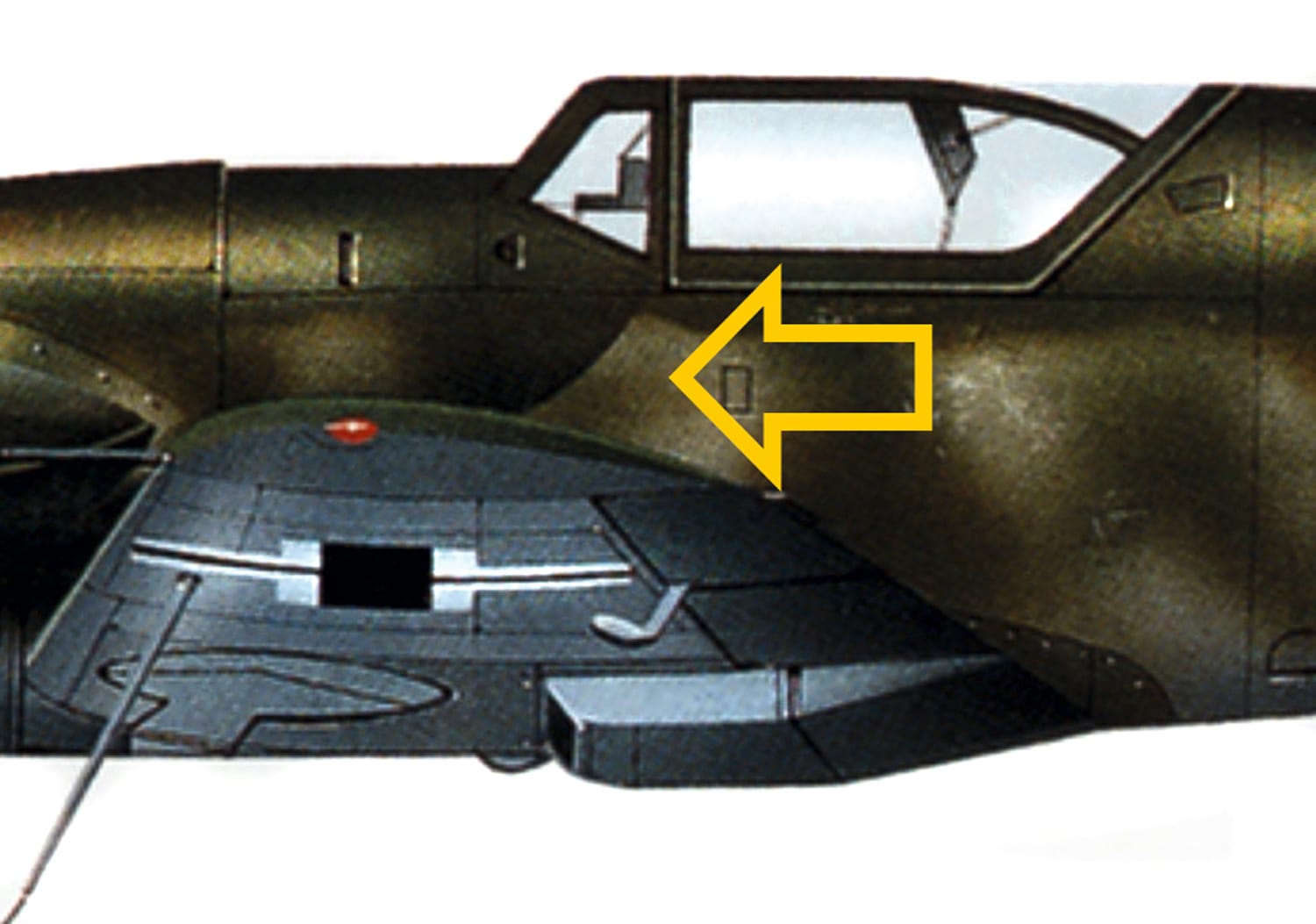
The following special features characterised the Messerschmitt Bf 109 G-10 from the Leipzig factory of Erla:
- a vertical recess at the rimless transition between the engine cowling and the port side of the fuselage.
- an extended underside of the engine cowling to allow for the fitting of the Daimler-Benz DB 605D engine.
- an enlarged tail unit, an enlarged, lengthened tail wheel, a modified heating unit.
- from January 1945 larger tyres on the undercarriage, which led to the adoption of the extensive (typical of the Me 109 K-4) wide, aerodynamic indentations on the upper side of the wings.
- an oval opening slightly behind and below the MW-50 inlet opening on the starboard upper side of the fuselage behind the cockpit. Initially intended for the GM-1 system of the early Me 109 G-5s and G-6s, this opening was superfluous in the G-10. Obviously, the production drawings had not been updated by Erla, unlike the Messerschmitt Bf 109 G-10 built by WNF, for example, which no longer had this opening. Erla possibly felt that a modification was unnecessary.
- smaller Balkenkreuze – all only signified, just with angled lines and, unusually, in this shape even on the underside of the wings. On the sides of the fuselage the white lines of the Balkenkreuz were sometimes filled in with dark camouflage paint, although not with black paint. The white lines signifying the Balkenkreuz on the upper sides of the wings were also smaller and attached further to the outside.
- the Swastika on the vertical fin was not black but only depicted with a white outline.
The following profile has been reconstructed on the basis of the photograph shown above and the known details. It is the author’s opinion that since no original photo of the Me 109 of JG 52 found destroyed at Deutsch Brod shows any yellow fuselage bands or yellow undersides of the engine cowling, it is unlikely that those have been painted on Hartmann’s last Me 109, which is different to other profiles. Obviously, this identification mark for “Eastern Front“ seemed in the meantime to be dispensable. It also seems safe to assume that the “R6“ modification kit was removed in the field.

Ebenfalls interessant…
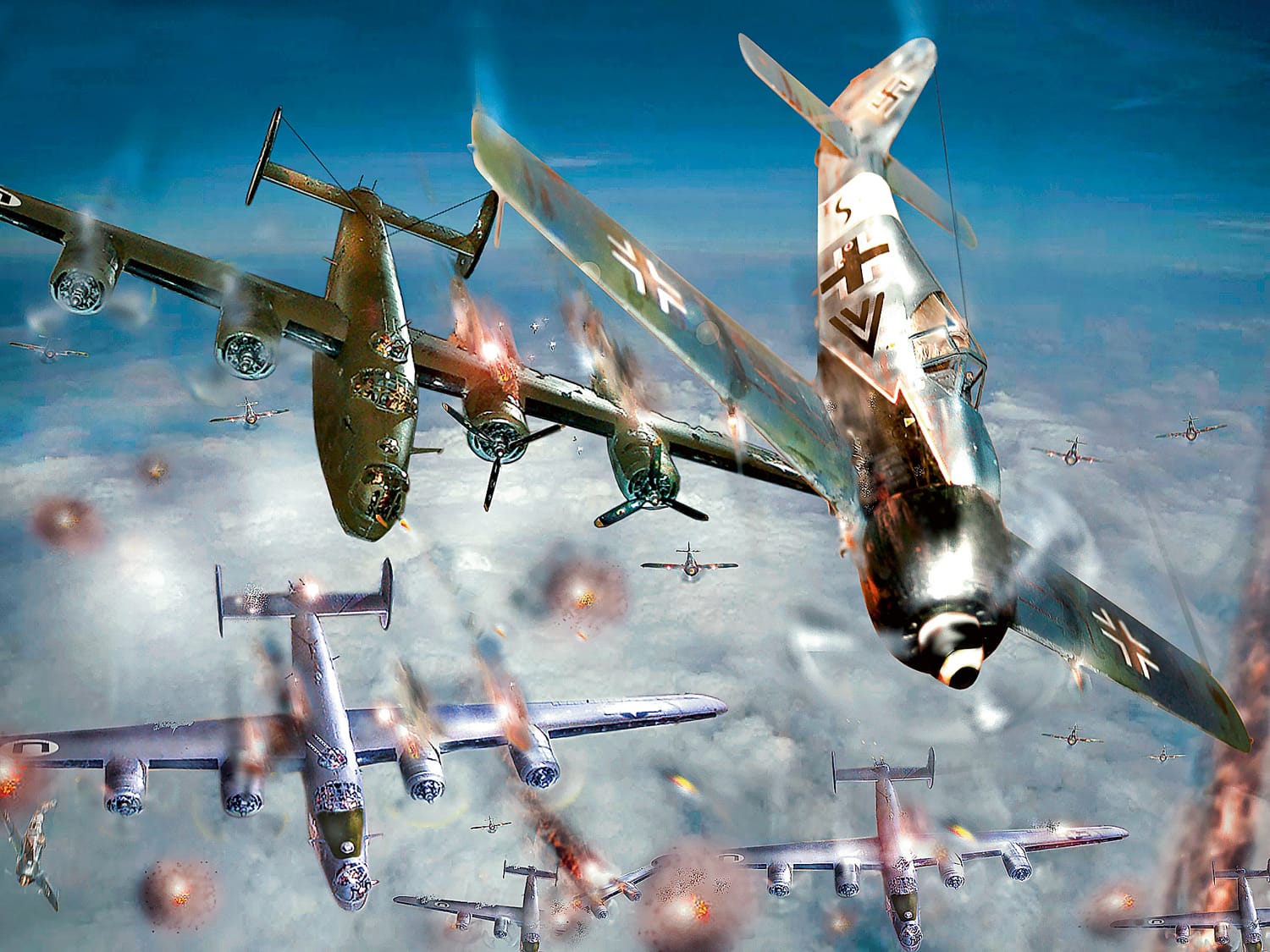
Sturmjäger – cuirassiers of the air
Air battle over Germany: the attack on hydrogenation plants and aircraft factories In the early hours of the morning of 7th July 1944 756 B-17…
Weiterlesen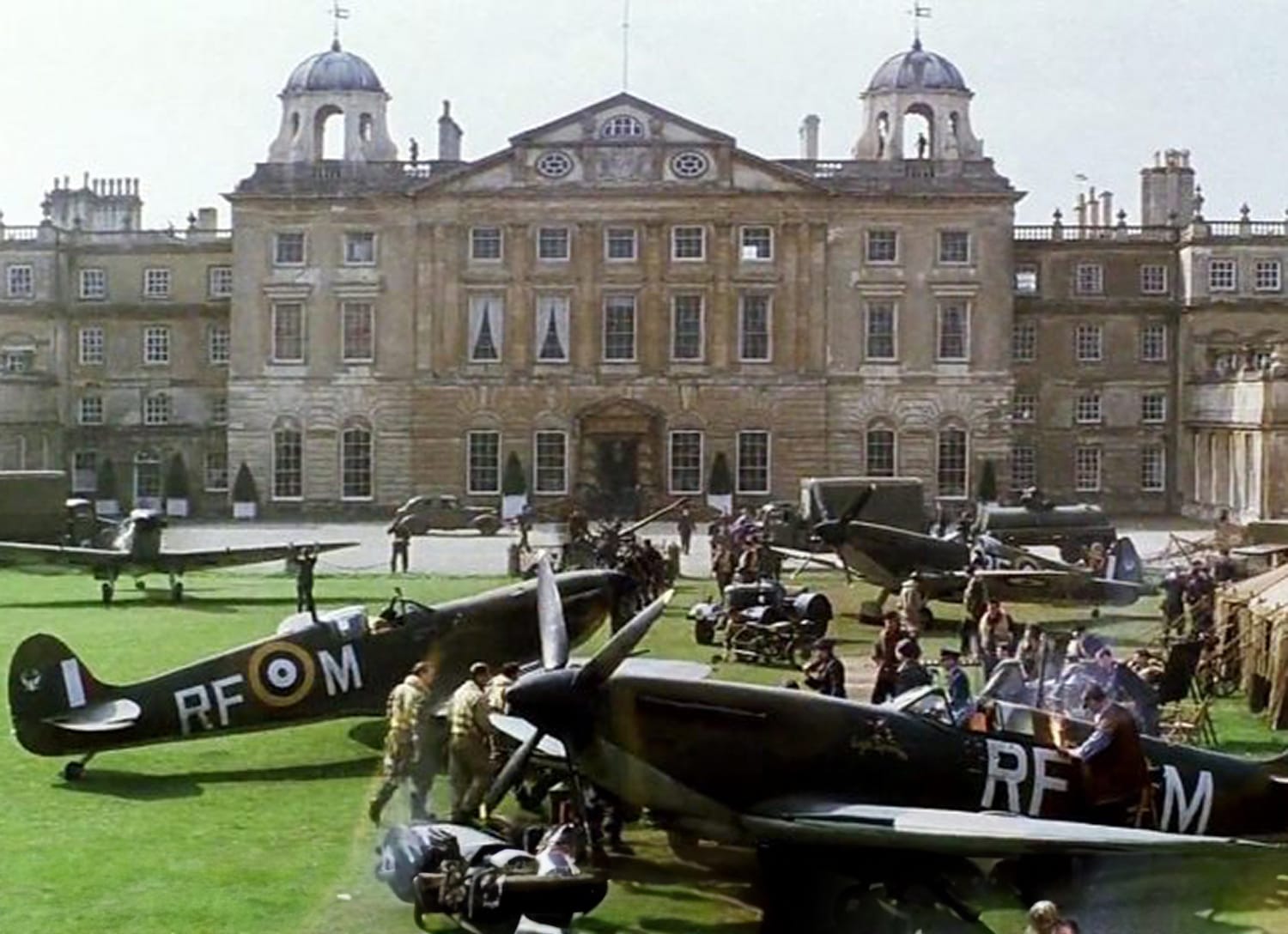
That’s how historic air battles get botched by Hollywood
Time and again the ignorance and nonchalance with which even highly renowned directors simply ignore historic details is fascinating. They do this in spite of…
Weiterlesen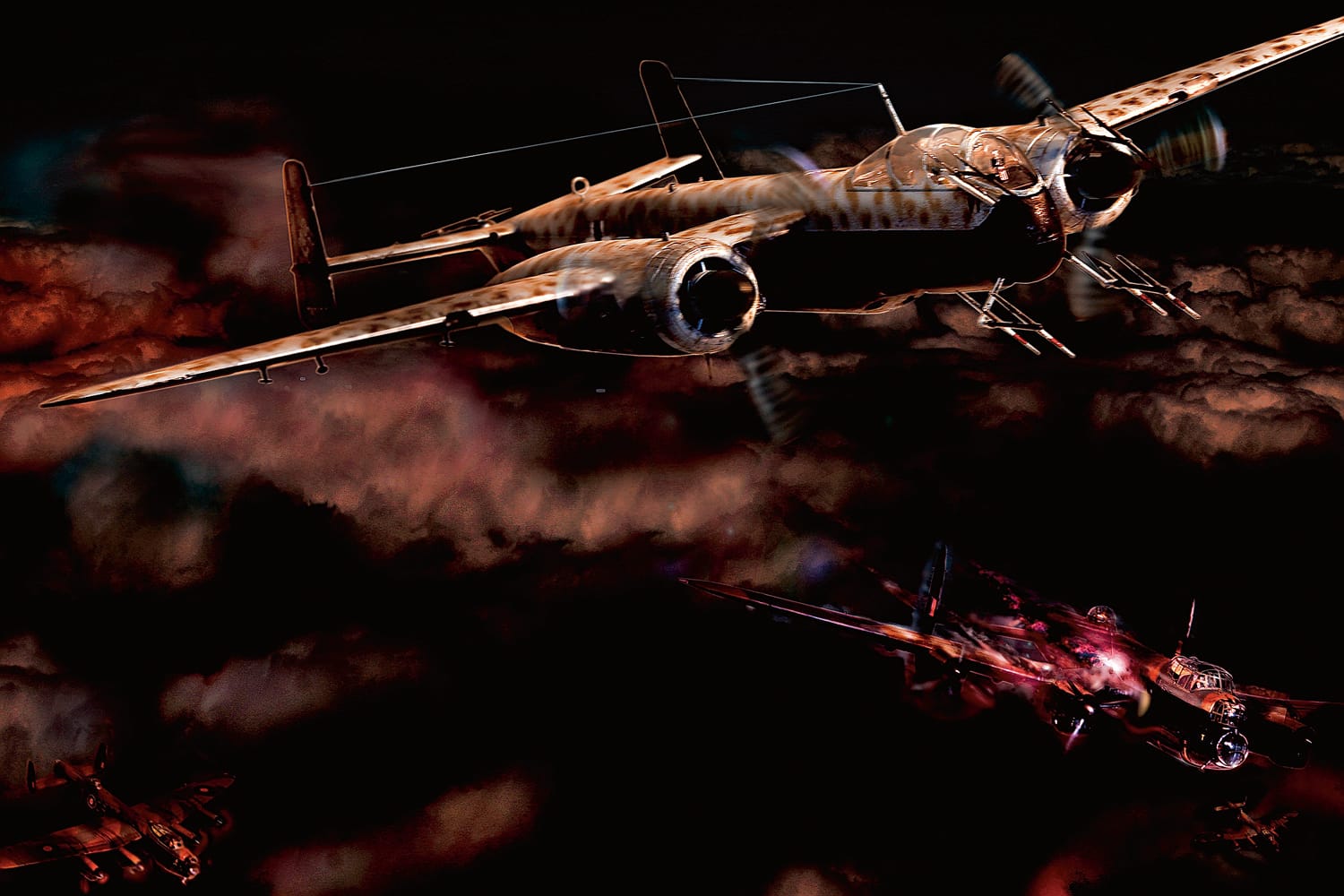
The night fighter He 219 “eagle owl” – the misjudged genius
In the year 1943 Germany was under pressure on all fronts, even on the so-called home front. Air Chief Marshal Arthur Harris, Commander-in-Chief of the…
Weiterlesen